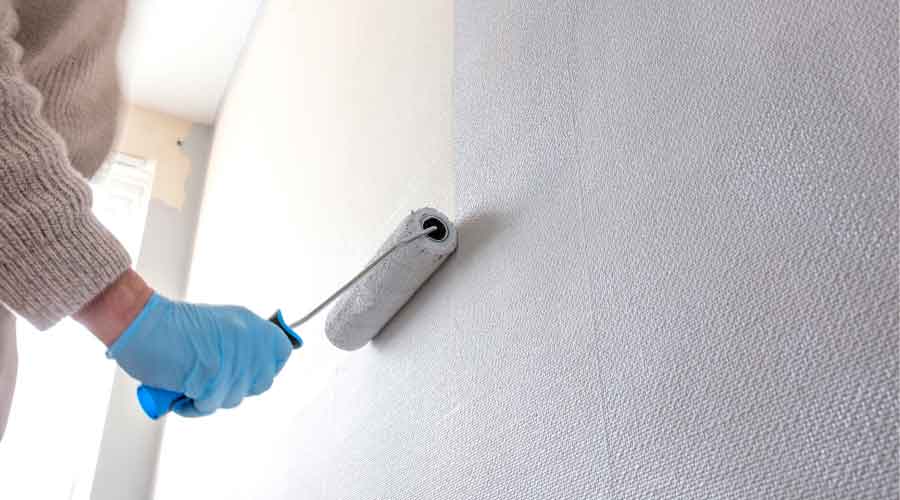Painting Projects That Last
From schedules to products and personnel, managers must coordinate a range of issues in planning paint application
Successful painting projects require that managers coordinate a range of products, activities and facility activities. These challenges require that managers develop and carry out strategies to orchestrating projects with facility schedules and activities, keep abreast of changes in paints and paint-application equipment and specify the most appropriate paints and coatings for the projects.
Orchestrating Projects
Picture this: Painting crews begin an already deferred painting in a large, frequently-used classroom area, only to find out that an event is planned that requires use of the area before workers have time to finish. A great deal of of time and money is lost rescheduling and moving painters and supplies to another area that is available for painting. But they don’t have the right paints for the second area.
Annually, many of these potential conflicts have spelled trouble for both facility occupants and maintenance managers. But if the facility has a high use rate — a lot of painted surfaces and wear and tear — painting cannot be deferred endlessly, or surface conditions won’t meet appearance and protection guidelines.
A computerized maintenance management system (CMMS) can be an excellent tool for successfully scheduling painting using the preventive maintenance module, schedule frequency and start dates.
Start with the event calendar. For example, what are the classroom schedules, hospital bed or operating room use, and public area use times in a facility? Look for windows in which no activity is scheduled, and enter them in the CMMS painting annual plan. Seasonal work, such as outdoor painting, requires the same approach. Use weather patterns to pick months when the temperature is mild — 50-75 degrees and below 60 percent relative humidity.
Managers also can use a long-range approach:
- Order material and paint supplies just in time, keeping inventory costs low.
- Predict the required number of hours of painting each week
- Ensure proper staffing is available
- Even out peaks and valleys in the painting workload to minimize staffing fluctuation.
- Ensure that the paint maintenance levels match established policies.
Managers who invest in a well-planned, annual paint program based on sound policies for application frequency and methods, and who use the best materials suited for the job, can ensure that building and equipment assets are well protected and can provide a pleasing appearance for a long time at a reasonable cost.
Paint Evolution
Paint suppliers have made great strides in paint formulations, and maintenance and engineering managers have done a remarkable job keeping up with the latest materials and application techniques, even inventing some of their own.
As the number of products grows, their application conditions become more specific. From experience, users have discovered the application methods that work best for certain paints, as well as ways to prepare surfaces correctly.
The payback is that surfaces will continue to meet expectations for much longer than in the past, when departments used one-size-fits-all paints, such as oil-based enamels, for everything.
Specification Considerations
Successful, long lasting specification solutions for troublesome painted areas starts with thorough, consistent preparation, including proper primer and finish selection and application. These initial practices can reduce trouble spots significantly. Preparation should always include removing dirt and grease with a chemical degreaser or cleaning agent, then thoroughly rinsing and drying the surface. Stubborn stains might require solvents or a detergent and flour paste. All surfaces must be clean and dry before painters apply any primer or one-coat system.
Wood that shows extensive moisture damage should be replaced and the moisture source sealed off. Any attempt to paint over damp wood will be at least unsuccessful, and it might mask further rotting and damage to the substrate. In extreme conditions, workers should replace the rotted wood with chemically treated, mildew-resistant, exterior-grade wood before painting using a compatible paint.
Where loose rust, paint or scale is present, first remove the loose material, and chemically clean the surface. Then scrape or wire brush it until only tight rust and coating remain. Small jobs can be done by hand, while larger ones require power sanders and wire brushes. Clean and dry the surface before applying the primer.
Treating structural metal or equipment that is frequently wet for long periods or subject to frequent chemical cleaning might require abrasive blasting — from removing loose coating, scale and rust to removing 95 percent of all coatings and oxidation down to the substrate — followed by complete chemical cleaning and drying.
Workers should allow new concrete to age for 30 days before painting. Then it should be chemically cleaned and etched with a commercial etching solution, thoroughly rinsed with water and completely dried. If concrete has been sealed so water beads on the surface, clean it with abrasives before painting.
Painting frequency will depend on facility conditions and activities. For example, some areas, such as mechanical rooms, might require painting every six to seven years, as long as the surface is clean and protected from damage. Reception rooms, building entrances and public areas, such as high-traffic restrooms, might require more frequent painting and very careful paint matching. Spot touch-ups in this area might be unacceptable.
Primer Pointers
All primers have minimum and maximum drying times before a top coat can be applied. Depending on the formulation, these times can range from an hour or several days up to 30 days or a year or more.
Quick-drying additives can shorten the these times. Primer application methods depend on the substrate and its condition. For example, lead might be present in pre-1960 paint. Before scraping, sanding or burning the suspected surface, managers should have it tested for lead with a commercial test kit, X-ray fluorescence testing, or chip analysis.
The testing lab can provide the proper method to take the sample. The sample should contain all coats down to the bare substrate, not just the top coats, which may have been applied more recently and might contain no lead.
If the lead-based paint is intact and in good condition, managers might be able to use in-place management. This includes vacuuming with a high-efficiency particulate air-filtered vacuum, washing with a high-phosphate or similar detergent, changing the water frequently, and sealing in place with several new coats of paint. Managers should check state or local regulations, as some prohibit the use of high-phosphate products.
If the test indicates lead, permanent removal is best done by a lead contractor. Whether removal or encapsulation-in-place is the right move depends on the scope, the source and what conditions the paint is in. Lead poisoning is most often from getting lead-containing dust into the mouth, not eating paint chips.
Avoiding Epoxy problems
Epoxies provide a tough, durable, and chemical-resistant floor finish. Among the common application problems are these:
Bubbles. These can be caused by air trapped in porous concrete; excessive ventilation, heat or sunlight; mixing too fast; or wrong roller covers.
White, blotchy or tacky surface. The causes are humidity, moisture in the concrete, or the wrong coverage rate.
Fish eyes. So-called because of their resemblance to the original. They can result from silicone contaminants, oil or grease, animal or vegetable fats and oils, or other spills not cleaned up thoroughly before painting.
Often, the only solution is to remove the paint, prepare the surface again, and reapply the finish. A better remedy is to be very careful and thorough, initially, following the manufacturer’s recommendations. If the application might be difficult, ask the vendor to be present when crews are ready to start and provide tips needed for success.
|
Related Topics:











